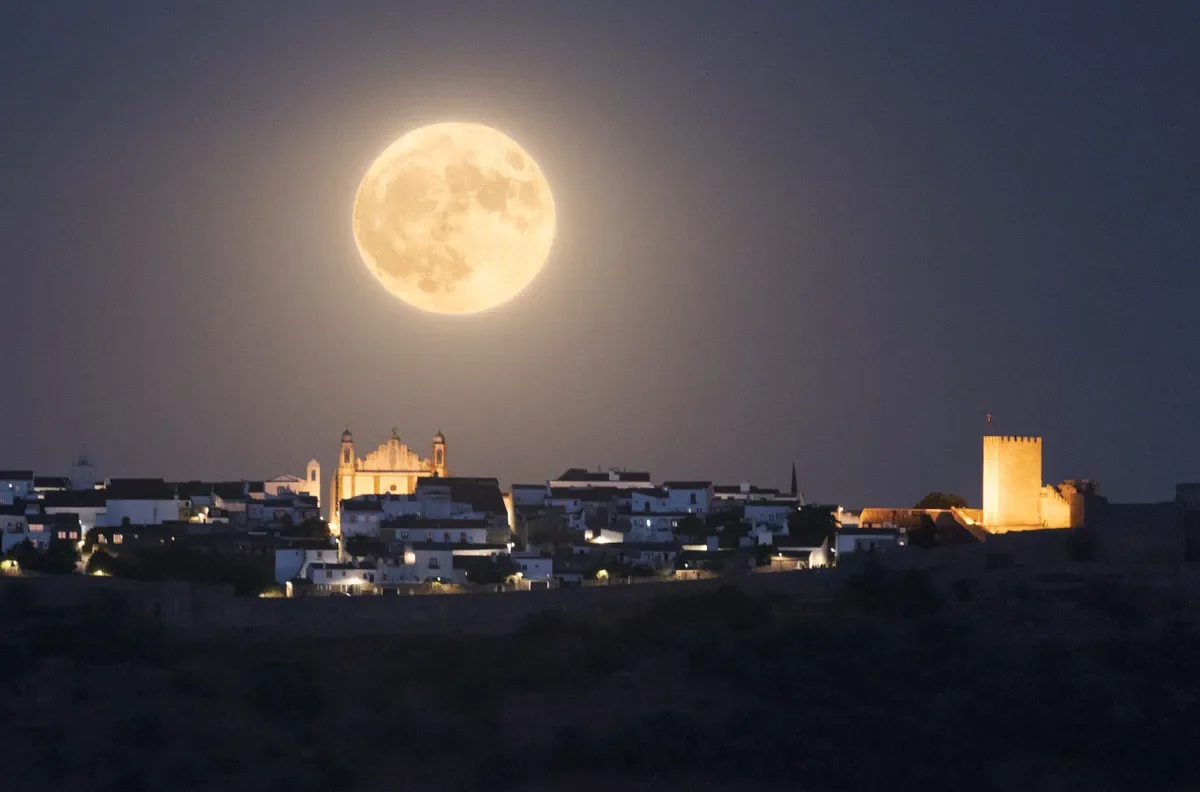2025 Lunar Magic: What to know about the three Supermoons

1st August, 2025 Supermoon captured by Sergio Conceicao. Photo Credit- BBC Night sky magazine
As the year winds down, skywatchers around the globe are gearing up for a lunar treat: three consecutive supermoons capping off 2025 with ethereal glows that blend science, wonder, and a dash of ancient lore. These are not the average full moons, they are perigee full moons, when our satellite swings closest to Earth, appearing up to 14% larger and 30% brighter than at apogee. In a world buzzing with eclipses and meteor showers, these lunar spectacles offer a serene pause, inviting us to tilt our heads skyward and reconnect with the cosmos. But what makes these 2025 events special? From optimal viewing spots to the myths they inspire, here’s your guide to making the most of these glowing orbs before the calendar flips.
October’s Hunter Moon
Kicking off the trilogy on October 7, the Hunter’s Moon, named for the harvest season when ancient hunters tracked game under its light, rises at its fullest around 7:48 PM BST. This supermoon, the first since August’s “Sturgeon Moon,” promises a harvest-gold hue as it crests the eastern horizon, casting long shadows over autumn fields. At perigee, it’s a mere 221,193 miles from Earth, amplifying its disk to a mesmerizing 33.8 arcminutes across. For Northern Hemisphere observers, pollution-free rural vistas will reveal subtle earthshine on the days leading up, while Southern stargazers might catch a lower trajectory hugging the landscape. Historically, indigenous cultures revered this moon for guiding migrations; today, it’s a reminder of seasonal cycles amid climate shifts.
November’s Snow Moon
November’s full moon, dubbed the Snow Moon or Beaver Moon, aligns perfectly with perigee on November 5 at 5:19 PM GMT, making it the closest and largest of the trio at just 221,130 miles away. Its illumination peaks at 99.9%, bringing wintry nights in silvery brilliance that could rival dawn’s first light. This event coincides with the Leonid meteor shower’s ramp-up, potentially sprinkling 10-15 shooting stars per hour if skies clear. Urban dwellers, fear not, apps like Stellarium can pinpoint its rise over landmarks, while binoculars tease out craters like Tycho aglow in the southern highlands. Ecologically, this moon once signaled beaver-trapping time for Native Americans; in 2025, it underscores polar ice reflections, a poignant nod to environmental vigilance.
December’s Cold Moon
Crowning the sequence, December’s Cold Moon reaches supermoon status on December 5 at 12:15 AM GMT, hovering at 221,337 miles from Earth for a crisp, elongated appearance. As the year’s last full moon, it ushers in solstice vibes, rising opposite a setting sun to illuminate frost-kissed solstices. This perigee event, the 25th since the turn of the millennium, offers prime viewing for the Geminid meteor shower later in the month, blending lunar majesty with fiery trails. From equatorial belts where it arcs high overhead to polar edges where it skims the horizon, this moon’s accessibility is universal, though light pollution remains the arch-nemesis. Folklore ties it to “long nights” and renewal; scientifically, it’s a perigee showcase, swelling tides by up to 20% along coastlines.
What elevates these supermoons beyond spectacle? They’re harbingers of rarity, three in a row hasn’t graced skies since 2023, and the next trio awaits 2032. Astrologers wax poetic about amplified emotions, but astronomers stress optics: the “moon illusion” makes low-horizon views balloon its size psychologically. To capture them, wide-angle lenses at f/2.8 or faster, with ISO 100-400, yield stunning shots; for naked-eye awe, find dark-sky reserves via the International Dark-Sky Association. As 2025’s supermoons fade, they leave us pondering our blue marble’s dance with its silvery partner, a timeless rhythm in an ever-accelerating world.



